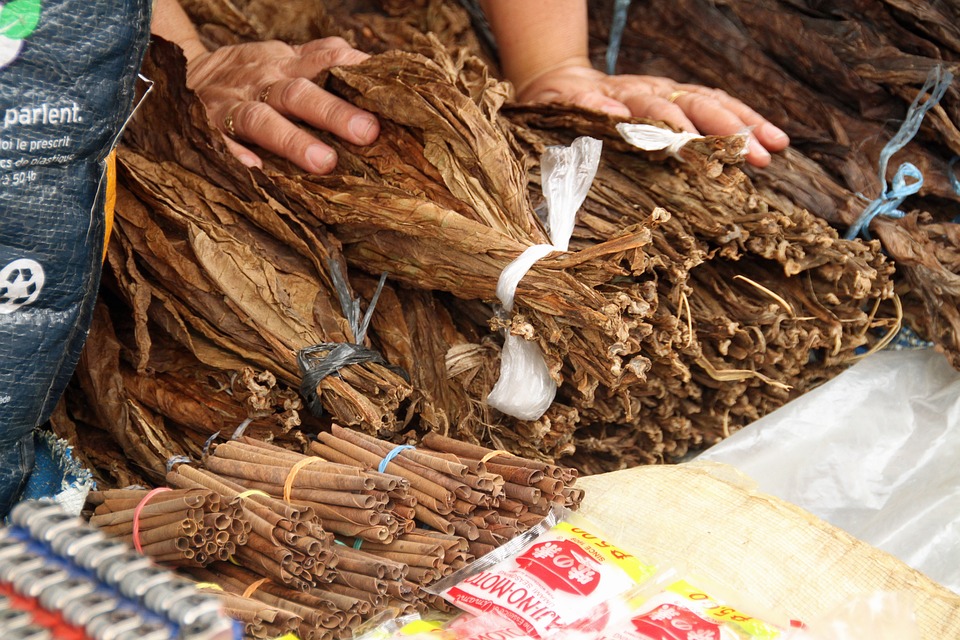The process of making cigars is a long one. It starts with the tobacco harvest and doesn’t end until the finished cigar is fed into the wrapping machine. Harvested tobacco leaves are first sorted according to color, strength, texture, size, and resiliency. The leaves are then separated into groups designated as filler, binder, and wrapper tobacco.

(Pixabay / MonicaVolpin)
After the tobacco has been processed, a blend, which is a specific combination of leaves, is prepared. The blend is then formed into a bunch, or rough cylinder, of tobacco. The leaves must be laid out uniformly and straight in the bunch to ensure consistency in the texture of the cigar.
The bunch is then tightly wrapped with the binder, giving the cigar its basic structure. The bound bunch is placed in a wooden mold to give it shape. The mold, usually containing about 10 unfinished cigars, is put into a press to give the cigars the desired shape. The press is periodically released so the cigars can be rotated.
After pressing, the cigars are prepared for hand rolling. The rollers stretch the fine, silky wrapper and circle it around the molded cigar body. The stretching process provides the cigars their sleek, finished look. A small rectangular piece of the wrapper (called a flag) is then attached to the head of the cigar.
The finished cigars pass through a series of inspections. They are then separated into bundles of around 50 cigars and are labeled according to the following:
- Vitola or size
- Name of the cigar maker
- Date
The bundles of cigars are then weighed. Each bundle must conform with a particular weight, otherwise it will show that the cigars are either too tight or too loose. This is a critical element in cigar making because cigars that are wrapped too tight will not be able to draw smoke easily while cigars that are wrapped too lose will burn too hot.
After passing the strict weighing procedure, the cigars are individually inspected. Cigars that do not pass the evaluation are sold as second-class cigars. The finished products are stored in cedar drawers or shelves, with carefully controlled humidity. Cigar making is a lengthy affair but a necessary one for producing the high-quality product that people of the world have come to love.




